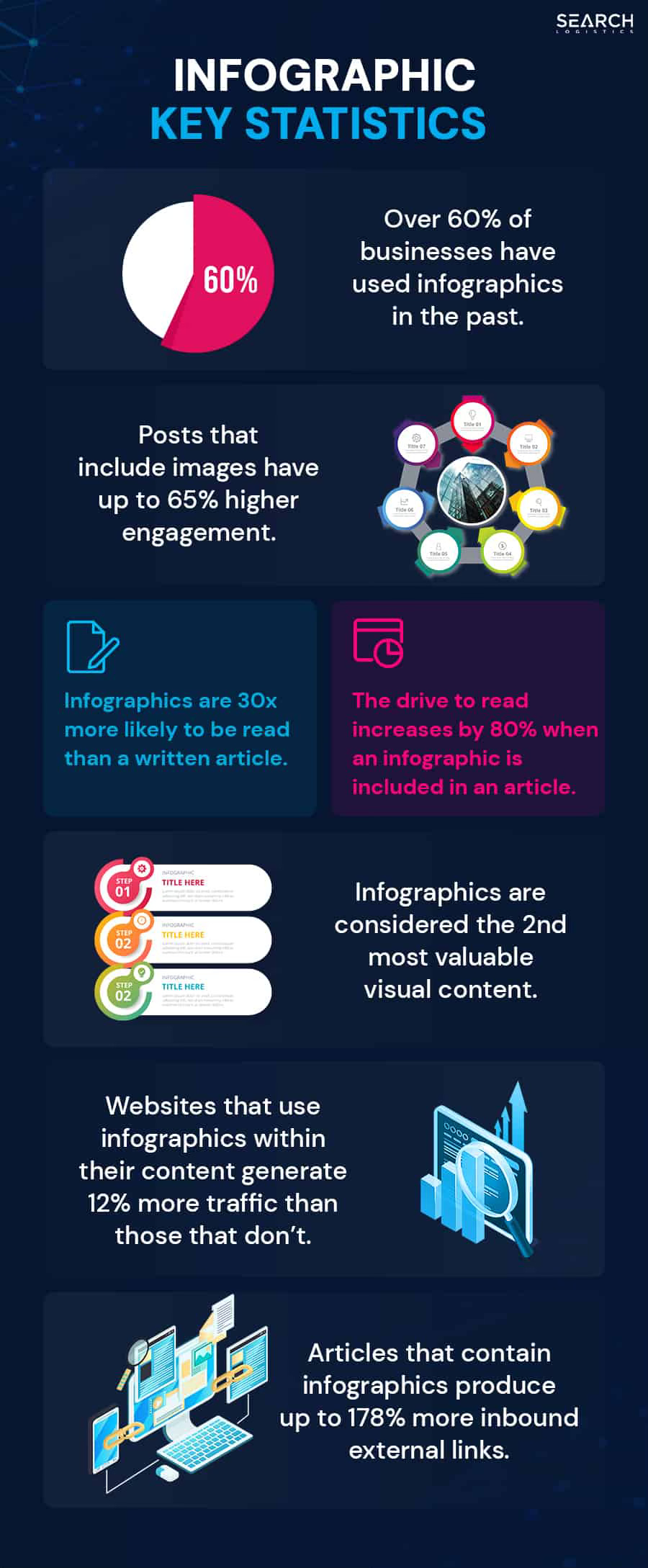We’re firmly in the Infographics Era, where visual storytelling dominates content feeds like LinkedIn and Reddit, transforming how ideas are shared and remembered. Infographics deliver clarity, speed, and visual impact, making them ideal for capturing attention and meeting the rapid content demands of today’s competitive, attention-starved market. Their reason for their effectiveness is clear: they meet demand in a market filled with visual learners, estimated to be 65% of the public. Given this context, it is understandable why infographics consistently outperform text-only content in terms of engagement, readership, traffic, and sharing.
Source: Search Logistics
Today, marketers are embracing infographics not just as a design trend, but as a foundational tool for storytelling. Whether it’s a complex product launch, a thought leadership campaign, or a social media push, a well-crafted infographic can distill abstract concepts into something instantly understandable, and eminently shareable.
Why Now?
The rise of infographics is fueled by their ability to deliver visual clarity and efficiency. In a content landscape overloaded with text, photos, and videos, infographics stand out by quickly conveying key messages, making them ideal for busy, time-strapped audiences.
This surge is also driven by:
Increased accessibility through AI and automation. Design tools like Canva and Figma have democratized infographic creation, while generative AI platforms such as OpenAI’s DALL·E, Meta’s CM3leon, and Google’s Imagen enable marketers and content creators to produce custom visuals on demand.
Information overload is another major factor. As audiences become increasingly selective, infographics provide structure and instant comprehension, enabling brands to convey complex ideas in seconds.
The dominance of visual-first platforms, such as Instagram, LinkedIn, X (formerly Twitter), and Reddit, further underscores the importance of infographics. These platforms’ algorithms prioritize images, charts, and videos, making infographics not just effective—but essential—for reaching and engaging audiences.
Finally, the broader influence of social media platforms such as Facebook, YouTube, and Instagram Reels reinforces this trend. As algorithms continue to prioritize visual and video content, infographics have become one of the most powerful formats for communicating business, news, and analytical information with clarity and impact.
Where It’s Going
As generative AI continues to evolve, we’ll soon see infographics that auto-adapt to a viewer’s preferences, learning style, or even industry background. Personalization, interactivity, and data visualization will converge, making every infographic not just informative but adaptive.
The prevalence of infographics is not merely a temporary trend; rather, it signifies a fundamental shift in the way we express ourselves within an increasingly visual-centric environment. Marketers proficient in this visual language, those capable of transforming complex insights into compelling graphics, will ultimately define and deliver narratives that resonate and endure.





